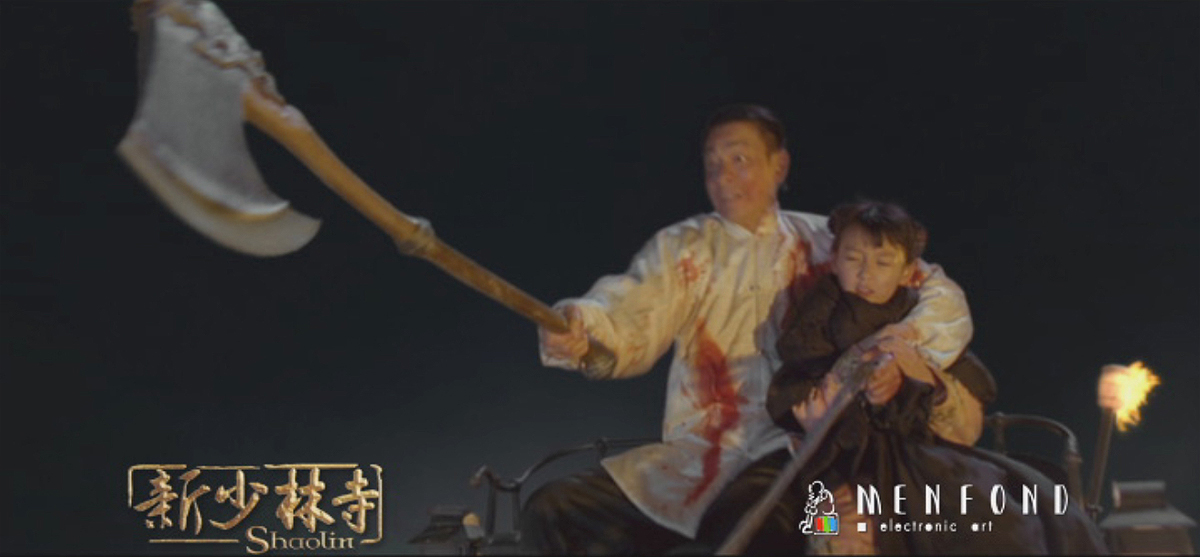Eddy Wong founded Menfond Electronic Art in 1990 with his brother Victor. They are the first to create the full computer graphics in China, it was for the commercial EPRO Paging. There are also working on cinematics for video games like PARASITE EVE or FINAL FANTASY VIII. In 2001, they created the first full CG animation feature, MASTER Q, with director Tsui Hark. Eddy Wong supervised the VFX of many films including INFERNAL AFFAIRS trilogy, LEGEND OF ZU, HOUSE OF FLYING DAGGERS or NEW POLICE STORY.
What is your background?
I graduated from China Central Academy of Fine Arts in 1989 and created Menfond in Hong Kong on September of the same year. Then started doing computer animation and special effects till now. My company has expanded to Suzhou in June 2007. Throughout the past 22 years, we created over 850 TV commercials and thousands of visual effects for 90 feature movies.
How did Menfond got involved on this show?
Benny approached me in 2010. After reading the script, I was really interested in it because it was the very first time that Andy Lau acts as a Buddhist monk with numbers of fighting scenes. Also, I believe that working with Benny with his careful and earnest attitude, we would definitely experience a lot from it.
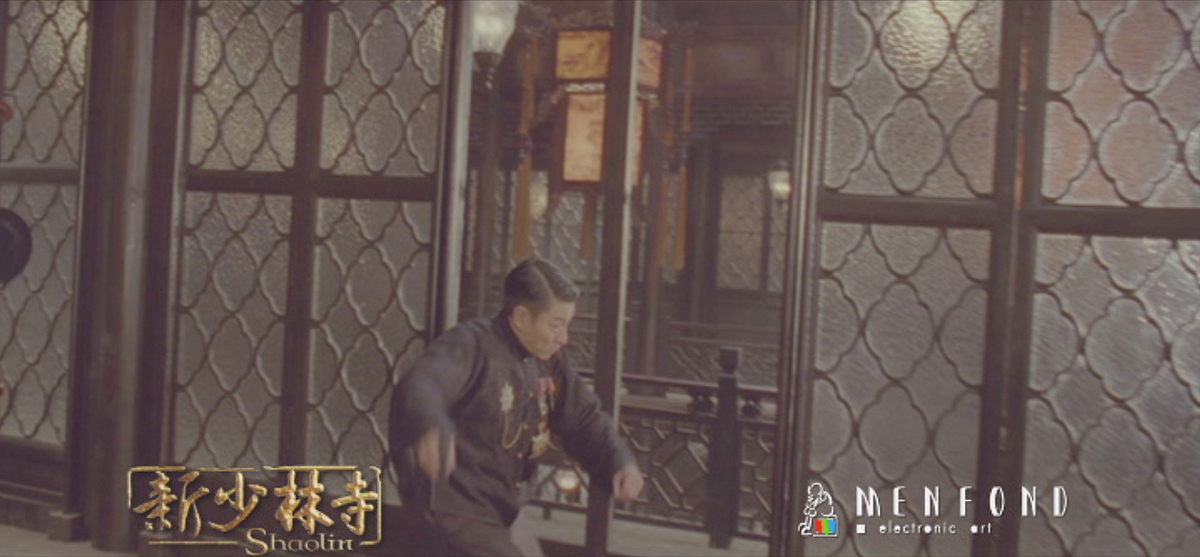 |
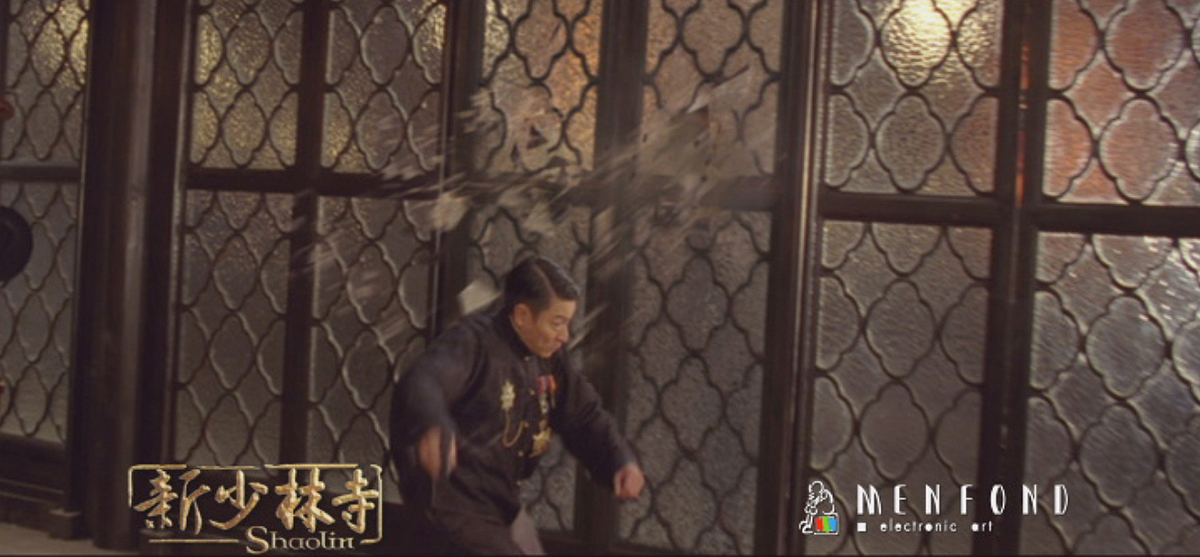 |
How was the collaboration with director Benny Chan?
I worked with director Benny Chan in 2004 for the NEW POLICE STORY, so I know his working style well. Through detailed and extensive discussions, we knew he always desired for new effects with a strong sense of reality, thus, we did a lot of researches to find the best solutions to cooperate with director’s ideas.
What was his approach about visual effects?
Benny has his own thought on visual effects. “Don’t let the exaggerated special effects influence the drama development” was his direction on visual effects.
 |
 |
The location of the Temple is beautiful. Can you tell us where is it and have you enhance it?
The temple was filmed in Zhejiang, China. We researched various temples from that region and era, then proceeded to add our own creative enhancement to portray the Temple in a more grand and magnificent manner.
Have you made some set extensions for the Temple and how did you create them?
Yes, we extended part of the temple. From our research and various reference photo’s we built a 3d model in Maya. With camera tracking software we tracked the live footage and incorporated that into our 3D scene and added texture and lighting to match the live footage. Then our compositing team put all the elements together and fine tuned the image for output.
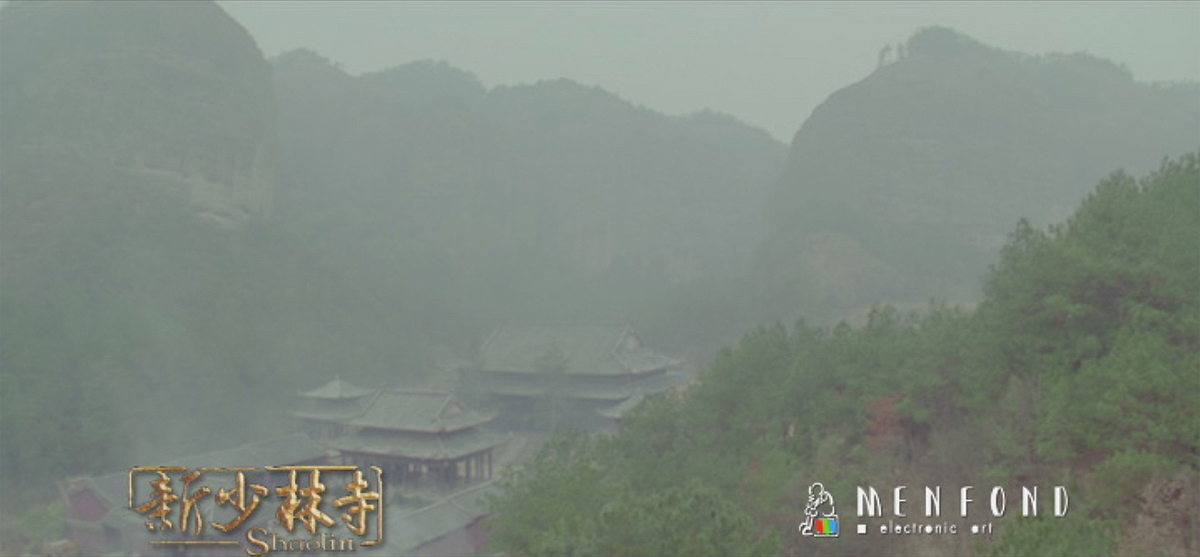 |
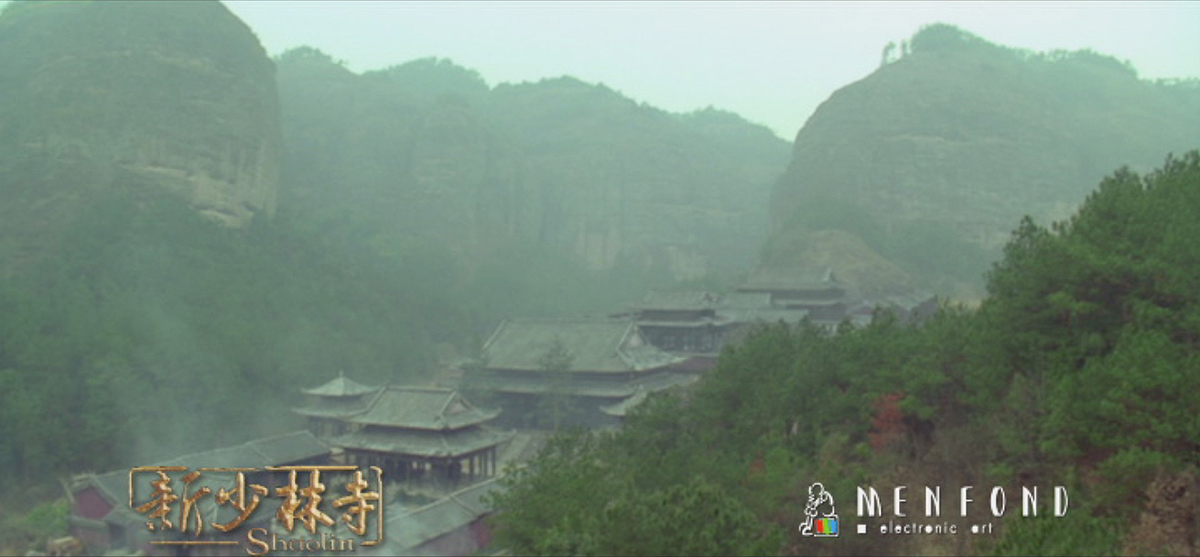 |
Can you tell us what you have done on the Restaurant Ambush sequence?
A lot of the flying axes, broken glass, and table debris were CG simulated for the actors’ safety and for us to have more control to frame the shot properly.
 |
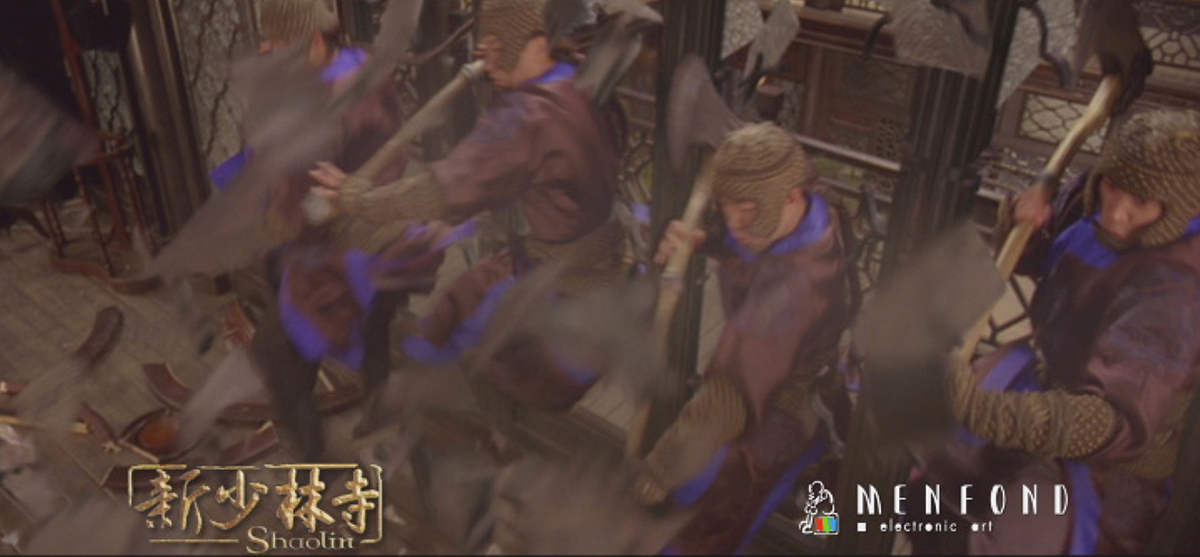 |
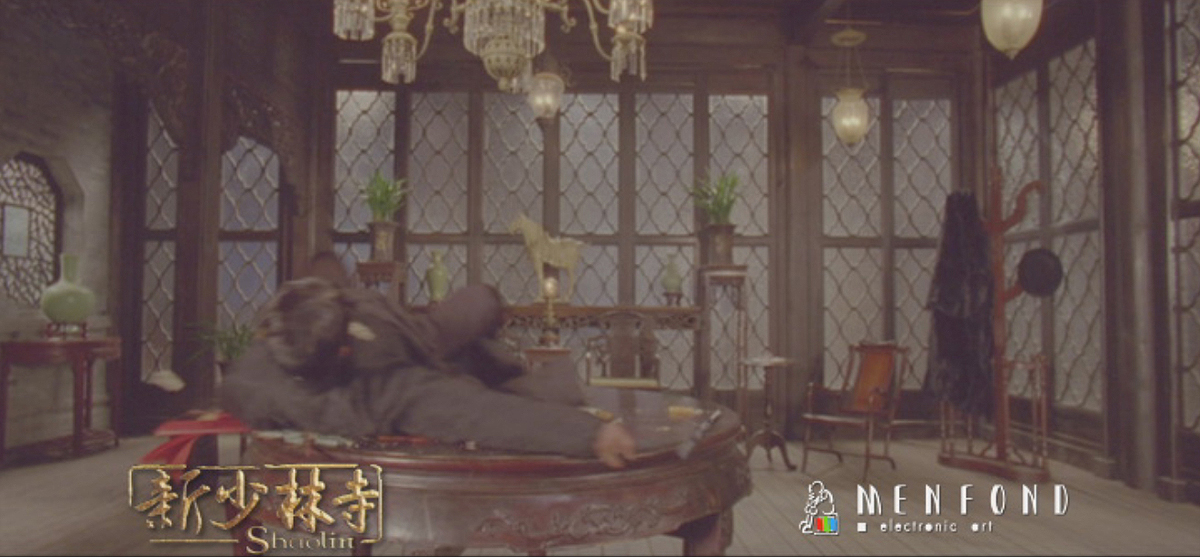 |
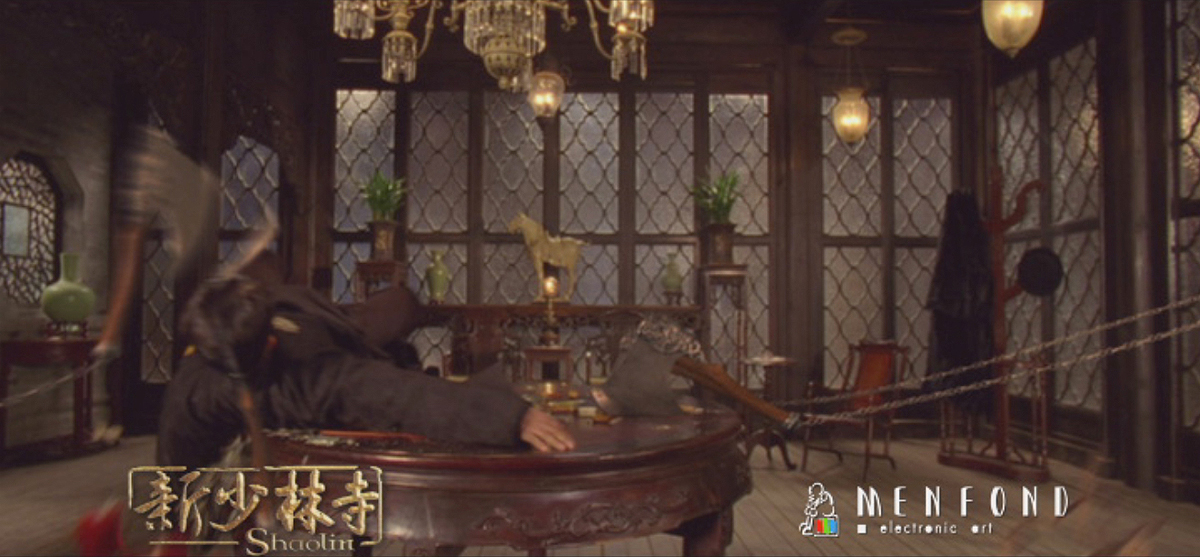 |
How did you made the shots in which Nan is hit by the horses?
We shot the cart and the girl as separate elements. First we filmed the girl crossing the road and via a wire rig attached to her we were able to simulate her being hit by the horse carriage. Then we filmed the carriage aspect of the shot with a stunt crew and then in After Effects rotoscoped and composited the two elements together.
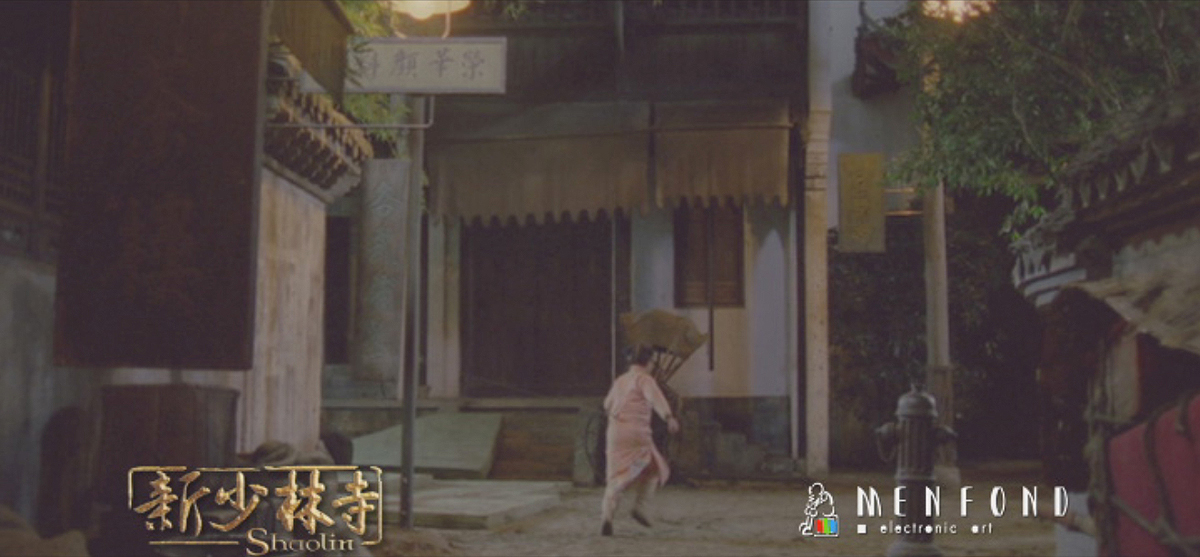 |
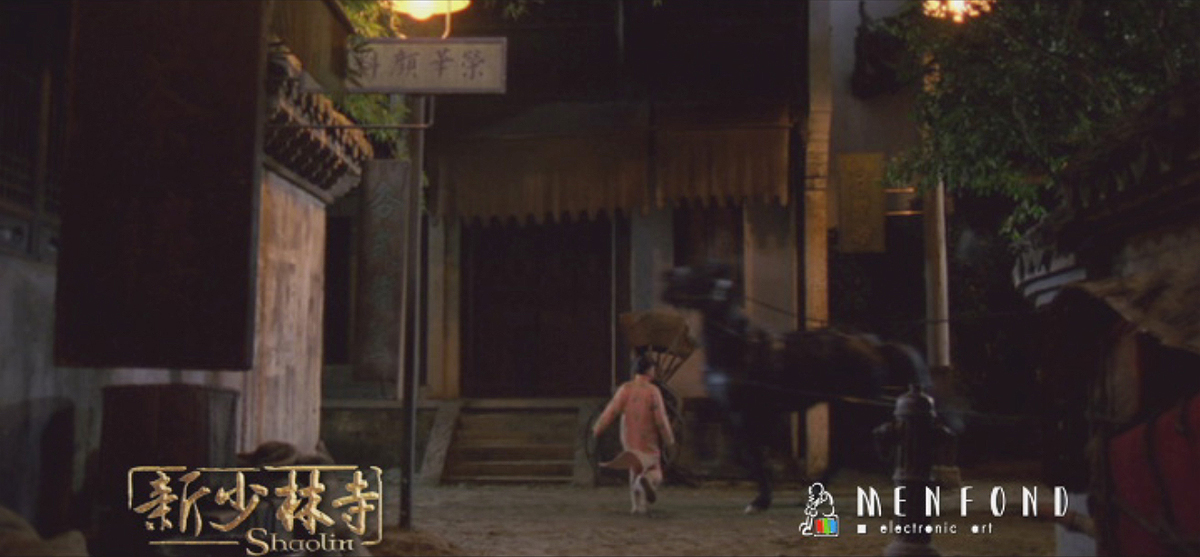 |
How did you create the huge canyon for the chase sequence?
We had an expert stunt driver control the cart next to a white line we drew on country a dirt road and then we build the canyon in 3D. After camera tracking the live footage, we incorporated the camera into the 3D software and textured it accordingly.
 |
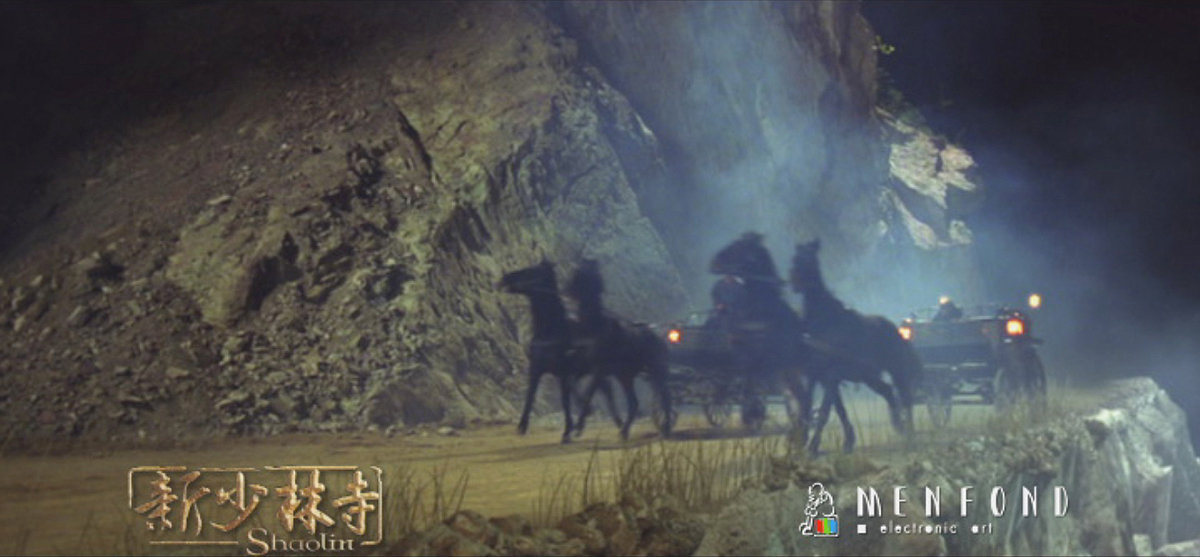 |
 |
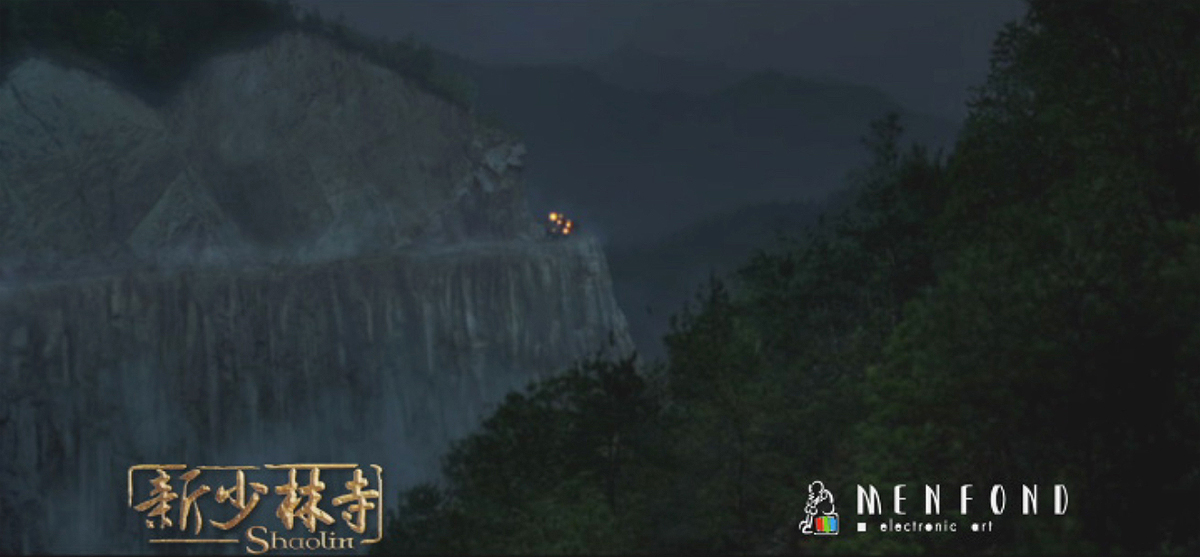 |
Then our compositing department rotoscoped out everything beyond the white line from the live footage and composited the CG canyon into the live footage to make it look like the carriage was diving precariously on the edge of the cliff.
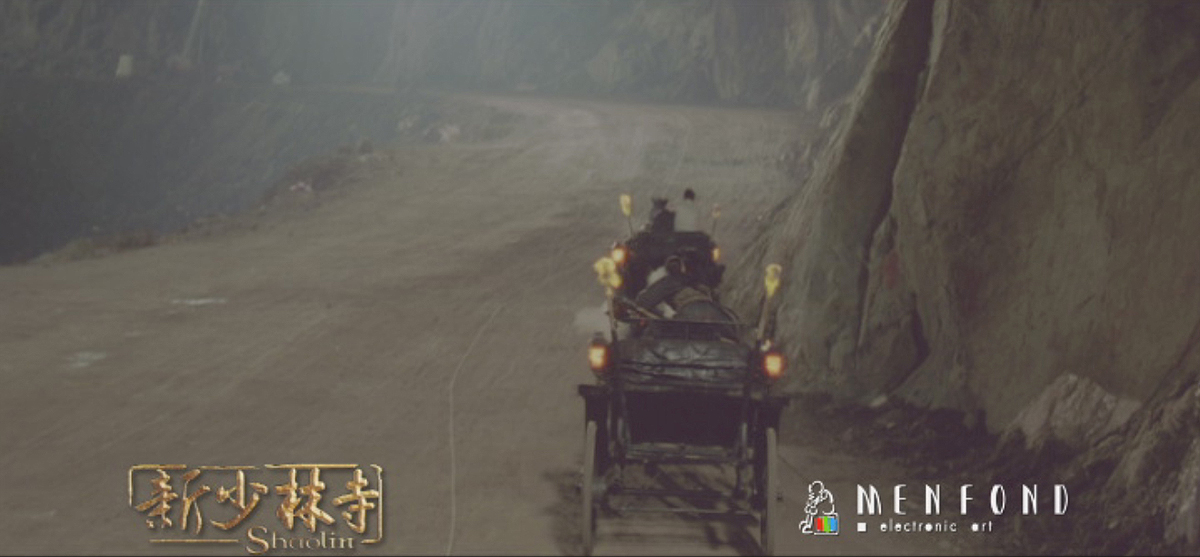 |
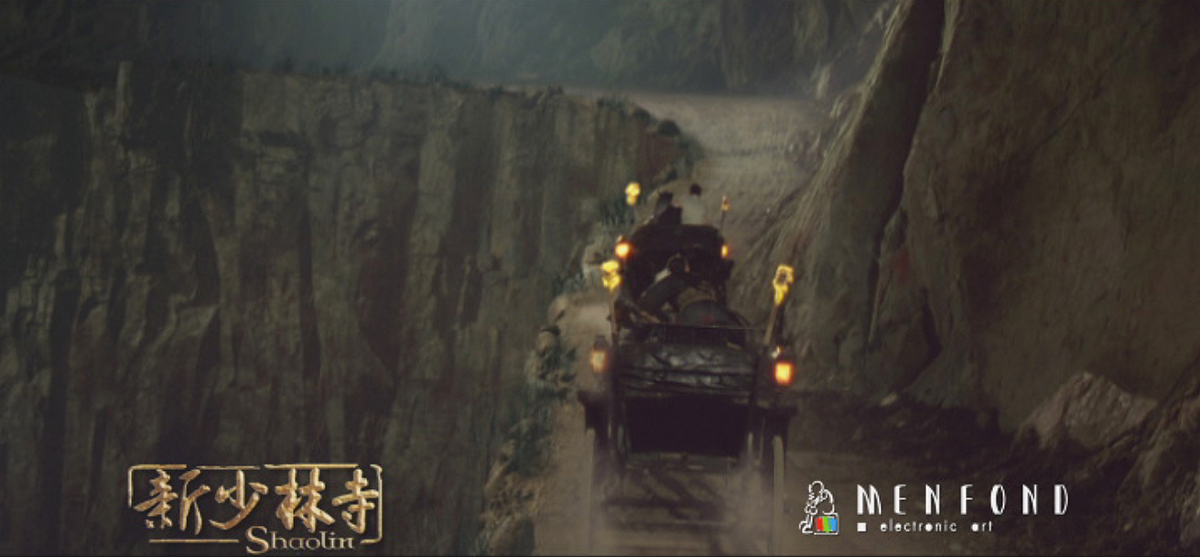 |
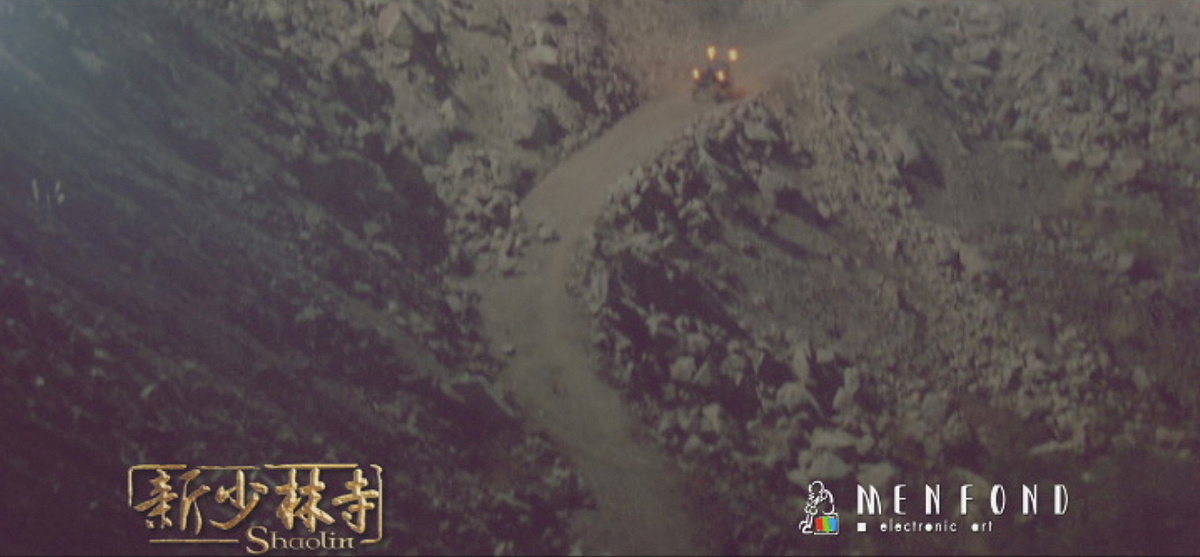 |
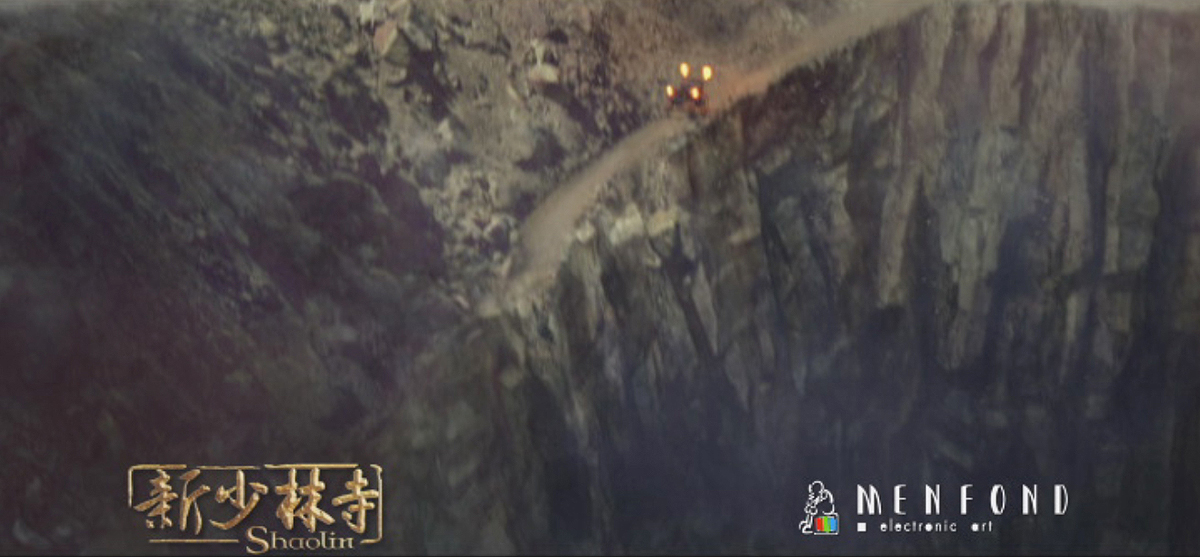 |
Can you tell us more about the Temple destruction?
A life size set of the Temple was constructed and blown up for that scene. Then we filmed the soldier’s reaction and cannons separately and composited the elements together.
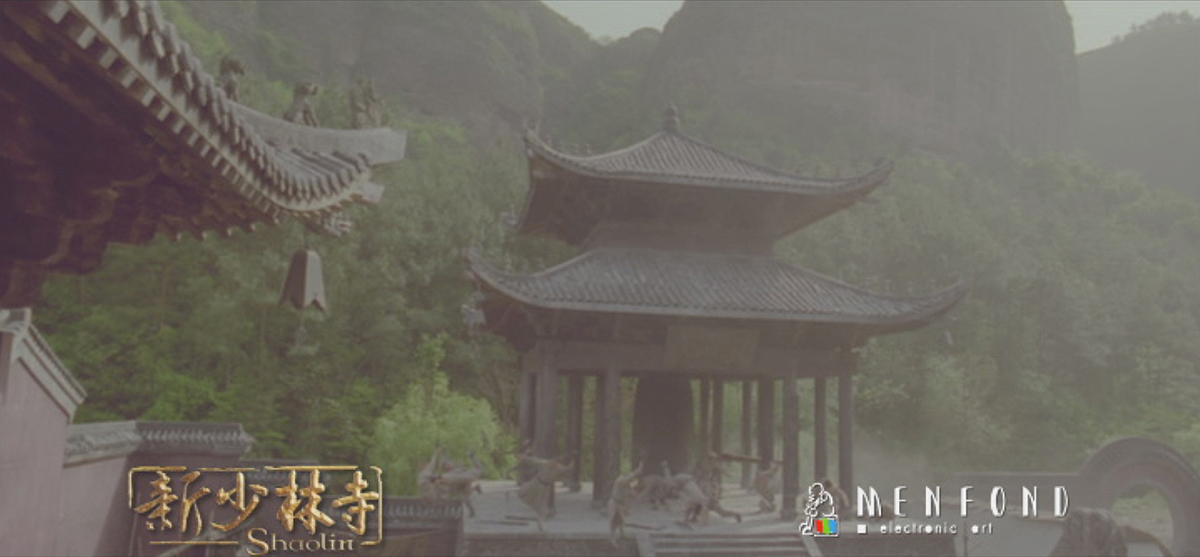 |
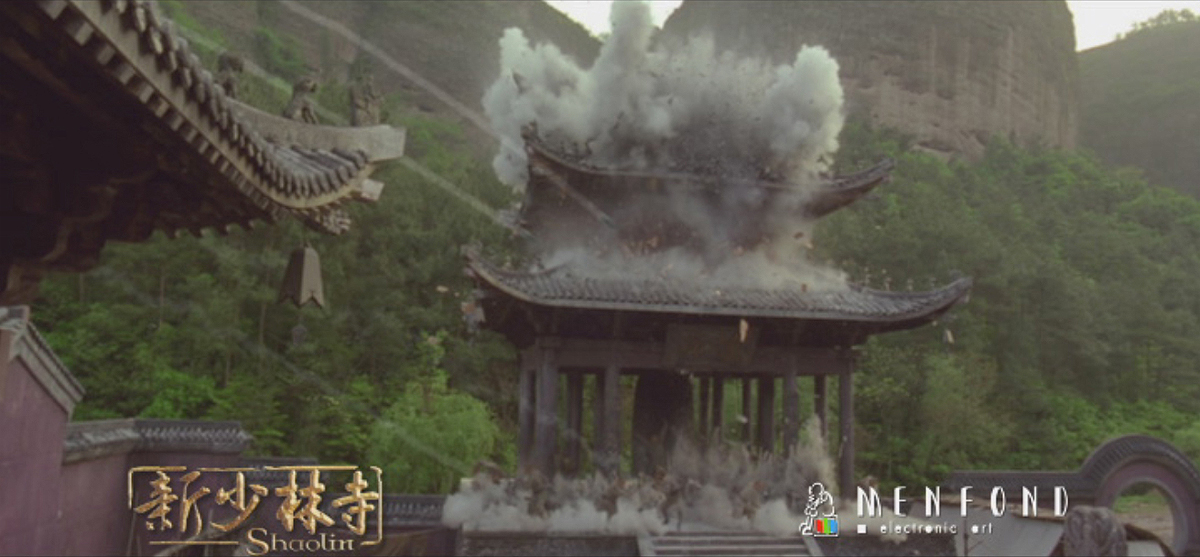 |
Did you use models for this sequence?
It was determined that a 1:1 set piece of the temple was to be built and blown up to properly portray the scale of the explosion.
In many shots of the final sequence there are big explosions really close to the actors. How did you mix those?
We tried to film as much practical special effects at the location as we can so that way the light of environment is as realistic as possible but for obvious safety reasons all the actors, explosions, and bombs were shot separately. With the actors being filmed separately the pyrotechnics crew were able to create big cinematic explosions. In fact only the cannons were computer generated. All the elements were then composited in After Effects.
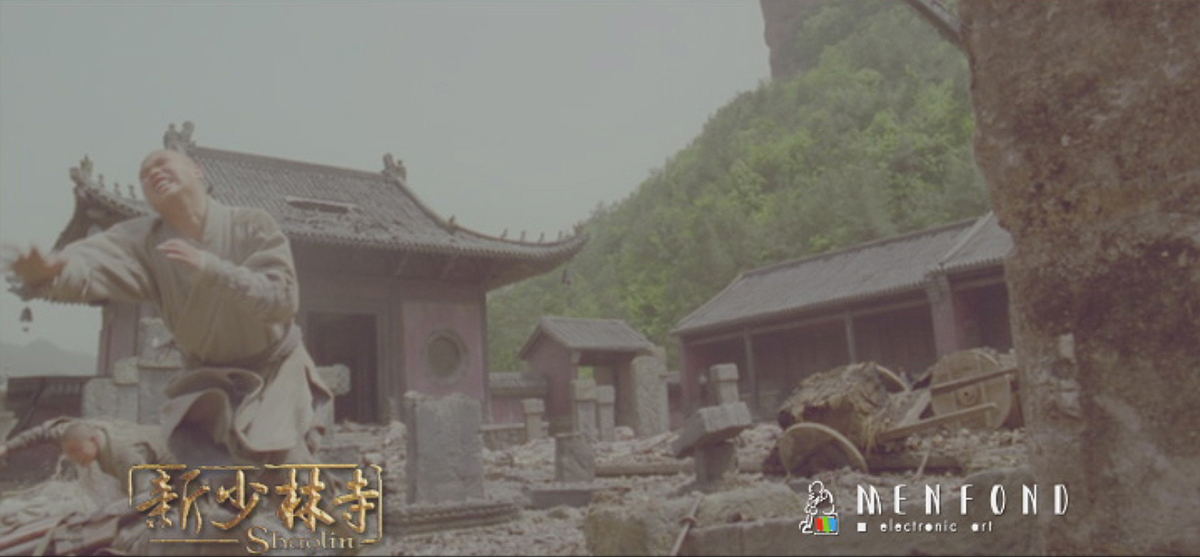 |
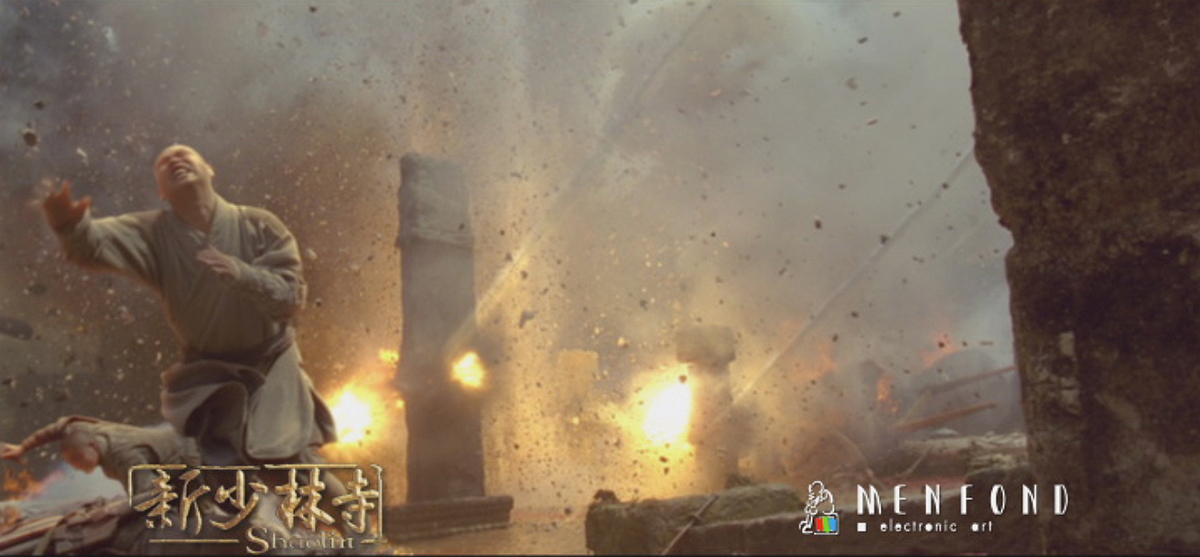 |
How did you create the different environments and especially the wide shot of the Temple with the British soldiers?
Research is a very important part of our work, so we tried to find as many photos of Shaolin in the 1920’s as we can. In addition to the photos from the various different location shoots, our creative team were able to draw a detail matte paint to composite into the background of the live footage.
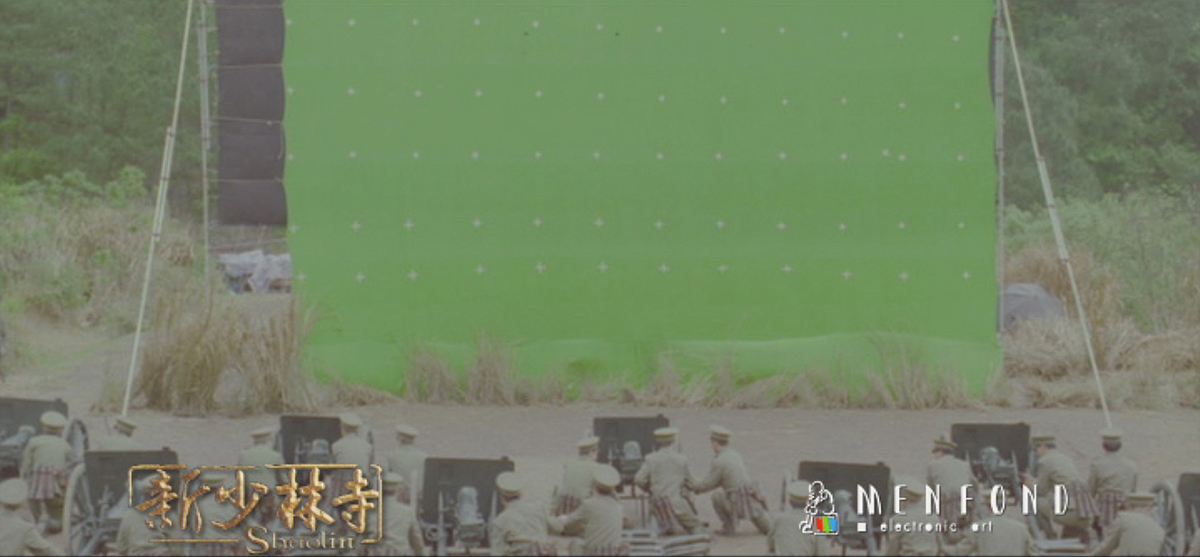 |
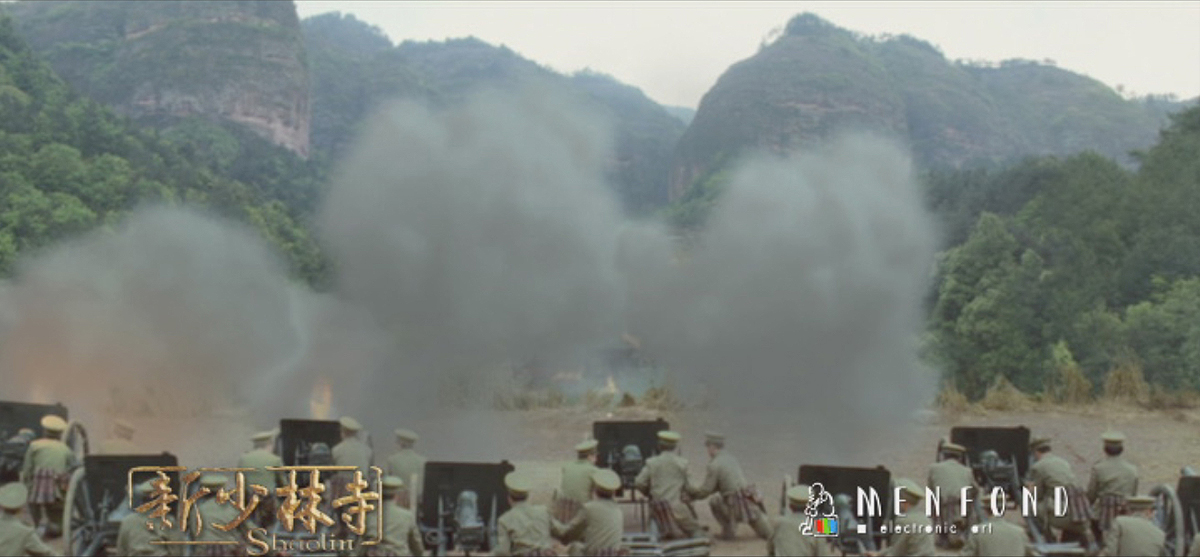 |
How was filmed the beautiful shot in which Andy Lau in falling on the Buddha hands? Did you made something on it?
That was mostly done on set. Andy Lau was suspended with a wire rig and the stunt crew were able to simulate him falling on the Buddha. The wires were then removed in post production and the blood was simulated in 3D and composited in After Effects.
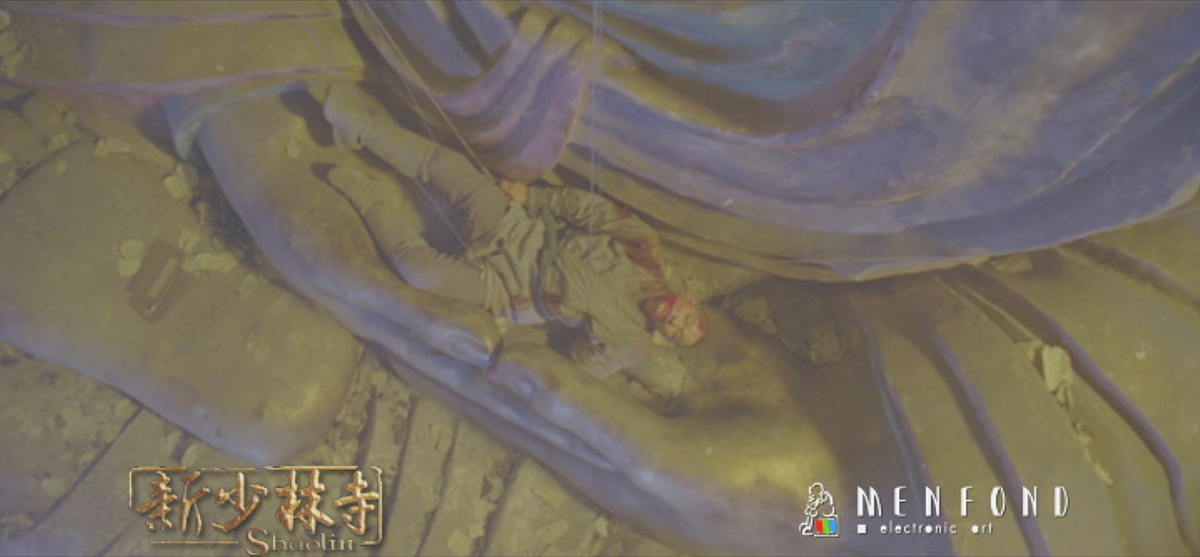 |
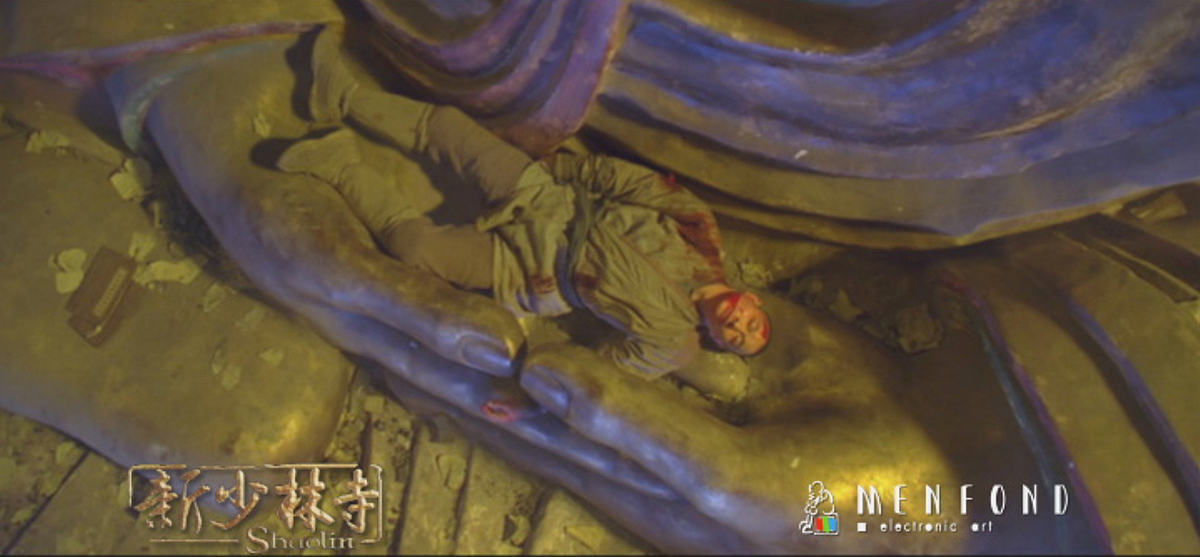 |
What was the biggest challenge on this project and how did you achieve it?
The biggest challenge would be how to generate new ideas. Let’s take the huge canyon for the chase sequence as an example. As we said before, it took abundant of time and process to create the scene. Thus, we have to strike a balance between time and production cost.
Was there a shot or a sequence that prevented you from sleep?
It would be the huge canyon for the chasing scene as it created a really tense atmosphere which makes audience feel so excited.
What are your softwares and pipeline at Menfond?
We mainly use After Effects, Autodesk Maya, various 3D tracking softer for matchmoving live footage, and Photoshop. First we gather research of the elements we have to model for the project a hand, then our modeling department creates the elements for our motion department to animate, followed by texture and lighting who realistically render out the elements to composite into the live footage. During this time the live footage is also rotoscoped and had any wire rig removed as necessary. Finally all the elements are put together in compositing and outputted to be scan for film.
What do you keep from this experience?
This was a really great opportunity to work with Benny and his professional team again. We have learnt how to cooperate with director and deal with emergency which was really a valuable experience for me and my team.
How long have you worked on this film?
We worked for about a year.
How many shots have you done?
Around 350 CG shots
What was the size of your team?
Over 100 artists.
What is your next project?
We are now working with famous Hong Kong movie star Cecilia Cheung, Zhang Ziyi and Korean star Jang Donggun in Shanghai for our new movie DANGEROUS LIAISONS. And we will make shanghai’s former glory come alive again in this movie.
What are the four movies that gave you the passion for cinema?
TERMINATOR 2, JURASSIC PARK, TRON (1982) and THE ABYSS (1989).
A big thanks for your time.
// WANT TO KNOW MORE?
– Menfond: Official website of Menfond.
// SHAOLIN (XIN SHAO LIN SI) – TRAILER
© Vincent Frei – The Art of VFX – 2011


